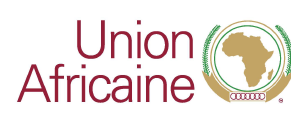Program Infrastructure Development for Africa (PIDA)
Overview
Infrastructure plays a key role in economic growth and poverty reduction. Conversely, the lack of infrastructure affects productivity and raises production and transaction costs, which hinders growth by reducing the competitiveness of businesses and the ability of governments to pursue economic and social development policies
The lack of infrastructure in Africa is widely recognized. Deficits of infrastructure have a clear impact on African competitiveness: African countries, particularly those south of the Sahara, are among the least competitive in the world, and infrastructure appears to be one of the most important factors holding them back. Deficient infrastructure in today’s Africa has been found to sap growth by as much as 2% a year .This is a continental problem that requires a continental solution.
Many of Africa’s 54 countries are small, with populations of fewer than 20 million and economies of less than $10 billion. Their infrastructure systems, like their borders, are reflections of the continent’s colonial past, with roads, ports, and railroads built for resource extraction and political control, rather than to bind territories together economically or socially. Because Africa’s economic geography is particularly challenging, regional integration is the best, perhaps the only, way for Africa to realize its growth potential, participate effectively in the global economy, and share the benefits of globalization.
The essential benefit of regional infrastructure is to make possible the formation of large, competitive markets in place of the present collection of small, isolated, and inefficient ones. Shared regional infrastructure is the only solution to problems of small scale and adverse location. An important benefit of regional infrastructure is its effect on trade within Africa. Because, despite robust GDP gains by many countries in recent years, Africa's staggering infrastructure inefficiencies have been choking integration efforts, stunting growth and sapping national resources, public and private. As regional integration improves the competitiveness of African producers and brings millions more consumers within their reach, Africa will see a swelling of intra- and inter-regional trade as a share of all trade. Regional infrastructure also exploits and advances synergies among sectors.
The Programme for Infrastructure Development in Africa (PIDA), a Multi sector programme covering four Transport, Energy, Transboundary water and Telecommunication/ICT is dedicated to facilitating continental integration in Africa through improved regional infrastructure and is designed to support implementation of the African Union Abuja Treaty and the creation of the African economic Community,
PIDA is a joint initiative of the African Union Commission (AUC), the New Partnership for Africa’s Development Planning and Coordination Agency (NPCA), and the African Development Bank (AfDB). PIDA is grounded in regional and continental master plans and action plans as well as other relevant work undertaken by the African Union (AU), the regional economic Communities (RECs), the regional and continental technical agencies (including the lake and river basin organizations (L/RBO) and power pools (PP)), and the concerned countries.
At the XVIIIth Ordinary Session of the African Union (AU) held in Addis Ababa, Ethiopia, on 29-30 January 2012, the AU Heads of State and Government formally endorsed the Programme for Infrastructure Development in Africa (PIDA) through adoption of the “Declaration on the Programme for Infrastructure Development in Africa” (Doc. EX.CL/702(XX)).
Objectives
The importance of regional integration for supporting Africa's economic development has long been recognized by African leaders, who have consistently expressed their desire to build a common market for goods and services. PIDA provides a common framework for African stakeholders to build the infrastructure necessary for more integrated transport, energy, ICT and trans-boundary water networks to boost trade, spark growth and create jobs. Implementing it will transform the way business is done and help deliver a well-connected and prosperous Africa.
PIDA's overall strategic objective aims at accelerating the regional integration of the continent and facilitating the creation of African Regional Economic as planned by the Abuja Treaty. By improving access to integrated regional and continental infrastructure networks, PIDA will allow countries the primary beneficiaries to meet forecast demand for infrastructure services and boost their competitiveness by:
Increasing efficiencies
Accelerating growth
Facilitating integration in the world economy
Improving living standards
Unleashing intra-African trade.
Implementation Status
Implementation will rely on all actors at all levels of the African development process taking coordinated action—AUC and NPCA at the continental level, the RECs at the regional level and, at the national level, the individual countries on whose territory the projects will be constructed and whose populations should benefit from them.
The implementation process is grounded in the Institutional Architecture for Infrastructure Development in Africa (IAIDA) which general aim is to reinforce institutional capacities and to create conducive environment for resource mobilization. The architecture consists of structures for decision-making and implementation. The responsibility for devising master plans and identifying integrative regional infrastructure lies at the regional and national levels. The responsibility for updating PIDA rests with the NPCA in close cooperation with the RECs and their specialized institutions.
Implementing infrastructure is always complex—more so for regional projects with many stakeholders. For PIDA implementation to succeed, coordinated action must be taken all along the project chain, starting with the Heads of State and Government, who must provide political leadership To that end, it is important to recall the catalytic role of the Presidential Infrastructure Champion Initiative (PCI) which facilitate implementation by removing bottlenecks. Country governments and financial institutions, such as the African Development Bank, must provide financial leadership. Political leadership, as well as financial leadership, is required to avoid the mistakes of past regional infrastructure efforts. At the regional level, RECs and the selected implementing agencies must ensure that countries involved are united and that project developers are skilled.
The requirements for different projects in different regions will naturally differ. Given these realities, PIDA's impact will rely on a few key success factors in the implementation process. Notably: Adherence to AU values of subsidiarity and solidarity, Strong local ownership, Quick starts and early wins, Shared responsibilities.
Expected out comes
Reduce energy costs and increase access. Africa will reap savings on electricity production costs of $30 billion a year, or $850 billion through 2040. Power access will rise from 39% in 2009 to nearly 70% in 2040, providing access to an additional 800 million people.
Slash transport costs and boost intra-African trade. Transport efficiency gains will be at least $172 billion in the African Regional Transport Integration Network (ARTIN), with the potential for much larger savings as trade corridors open. Steady advances in regional integration and services will finally create a shift from overseas trade to trade between countries and within and across regions, helping fulfill the promise of the 2028 African Common Market.
Ensure water and food security. Africa has the lowest water storage capacity and irrigated agriculture in the world, and about half the continent faces some sort of water stress or water scarcity—and demand is going to surge. To deal with the coming crisis, PIDA will enable the water storage infrastructure needed for food production and trade.
Increase global connectivity. PIDA will boost broadband connectivity by 20 percentage points. Increasing broadband penetration by 10%, which can be expected by 2018, will increase GDP by 1% by strengthening connections between goods and markets and between people and jobs.
Challenges
PIDA Implementation challenges include the following:
Operationalization of Institutional Architecture for PIDA Implementation: IAIDA defines responsibilities of Continental, Regional institutions (AUC, NPCA, RECs) and Member States, Builds on principles of subsidiarity, Allows high level advocacy, Provides a mechanism for reviewing performance and rolling over the PAP with access to the highest levels of the AU, RECs and Member States.
PIDA’s implementation success lies in assurances that it will be financed: Extension of Platform for project sponsors to meet infrastructure financiers, Support to Infrastructure Project Preparation funds for PPP and regional projects, Regional projects require strong involvement from countries and RECs
Enabling environment for more private participation: Financing will need to come mostly from domestic sources (public & private);
Country role in PIDA implementation: Projects are implemented by countries on whose territory they are located and by their agencies (public or private), Countries are critical and efficient players, Implement “soft” components (harmonisation of continental and regional policies), Financing project preparation, capital investment, operation and maintenance








